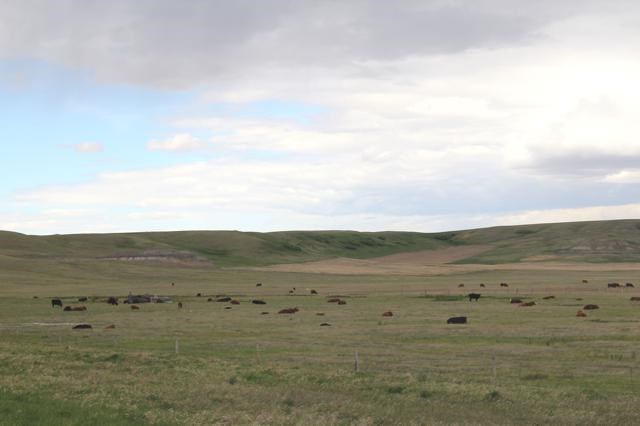–°¿∂ ”∆µern Saskatchewan ranchers have concluded an intensive period of activity ‚Äî first calving season and now preparing herds for grazing. Thousands of cattle in southern Saskatchewan will soon be spotted on green pastureland fattening up for the fall sales. Beef production is a key agricultural sector for the province worth $1 billion.
According to Canadian Census data, Saskatchewan has around 1.5 million beef cows and approximately 3.3 million acres of tame or seeded pasture and 13 million acres of natural land for pasture.
Calves born earlier this spring will be venturing out onto pastures for their first time. Before sending them out to join the rest of the herd, producers will be taking some preventative measures to ensure calf health. A recent veterinarian study showed that 85 per cent of Saskatchewan owners vaccinated their calves before moving herds to summer pastures. The most commonly used vaccines were for clostridial diseases and respiratory diseases.
Dr. Nathan Erickson, veterinarian at the Western College of Veterinary Medicine at the University of Saskatchewan, emphasized that that it is important prevention for calves to be vaccinated for respiratory diseases before they are pastured. Respiratory viruses are associated with upper respiratory diseases including infectious bovine rhinotracheitis (IBR) and bovine respiratory virus (BRSV). “Within these vaccines there is also a component for BVD bovine viral disease that doesn’t cause respiratory disease, but it causes severe immunosuppression which can lead to respiratory disease or make the calves more prone to it,” Erickson explained.
‚ÄúThe first time to get an injection against BRD is before the calves go onto pasture for that first time,‚Äù Erickson recommends. Bovine respiratory disease (BRD), or shipping fever, is the most common problem encountered in stocker or feedlot calves. Producers experience the most economic losses from this respiratory disease. Beef calves infected with BRD will have a lower average daily weight gain, and they will feed poorly. BRD typically hits calves within two weeks of –°¿∂ ”∆µ weaned when they undergo stressors like castration, more handling, co-mingling and transporting to other locations.
This is a time when calves will be exposed to many infectious agents that cause BRD. The stress itself has a negative impact on the immune system of calves causing them to be even more vulnerable to shipping fever. Other risk factors for BRD include moving them through sales yards, poor body condition, and transport over long distances. On arrival at final destinations, calves are often dehydrated, exhausted, and have suppressed appetite. This makes them vulnerable to BRD. It is common for many calves to develop severe bronchopneumonia and even die from shipping fever.




